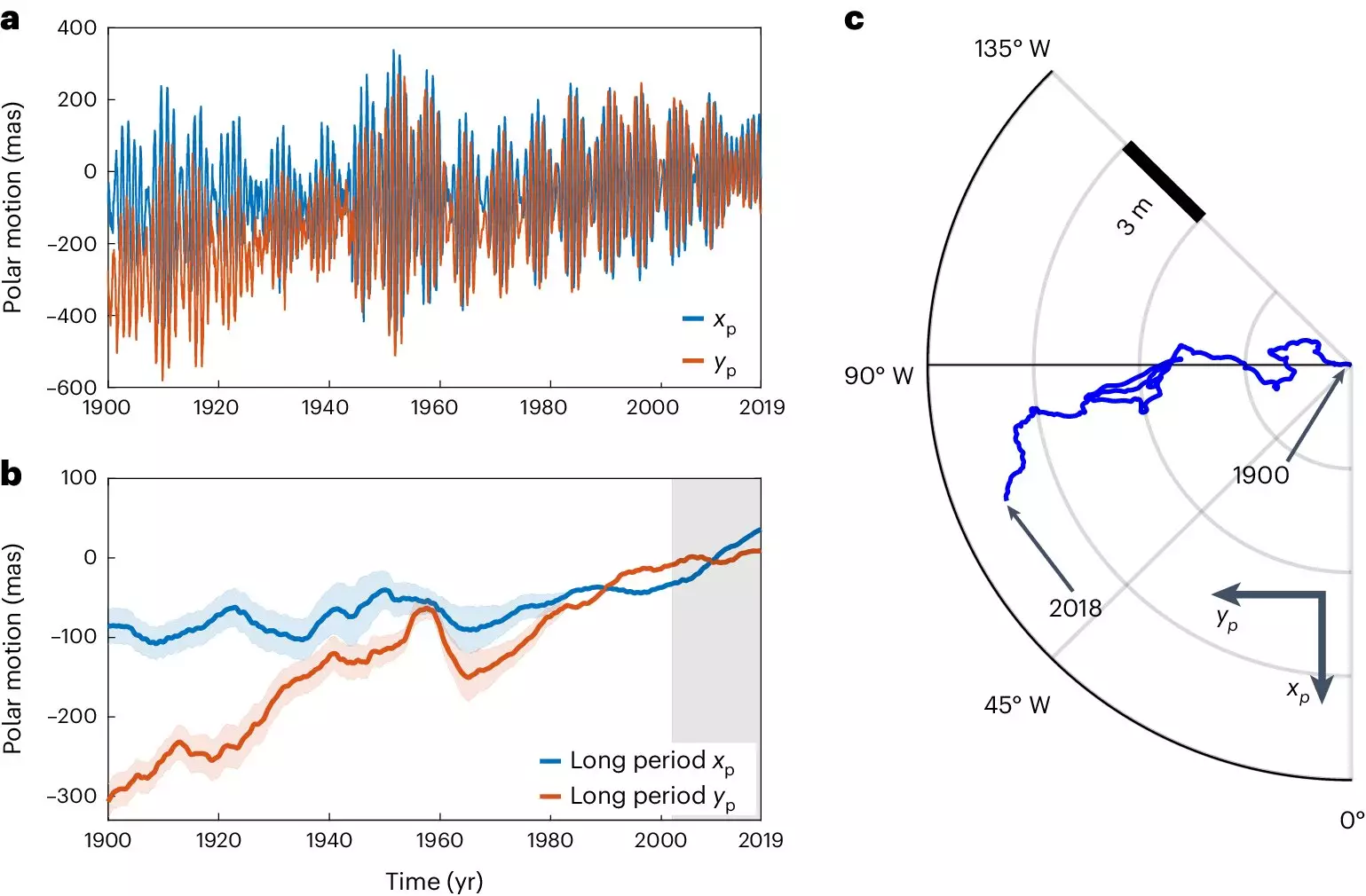The Earth’s rotation is a fundamental aspect of our planet’s behavior, and numerous factors can influence it. Recently, researchers at ETH Zurich have delved into the effects of climate change and global warming on Earth’s rotational speed, shedding light on a complex interplay of forces.
Climate change is causing significant shifts in mass, particularly with the melting of ice in Greenland and Antarctica. As a result, water from the polar regions is flowing into the oceans, leading to a redistribution of mass and affecting Earth’s rotation. This phenomenon can be likened to a figure skater extending her arms during a pirouette, which slows down the rotation due to changes in mass distribution. This shift in mass influences the Earth’s inertia, in line with the law of conservation of angular momentum.
The researchers at ETH Zurich have conducted in-depth studies on how climate change impacts the length of the day and polar motion. Their findings reveal that climate change is lengthening the day by a few milliseconds, primarily due to the movement of water from the poles to lower latitudes, which slows down the Earth’s rotation. Tidal friction, triggered by the moon, also contributes to this deceleration. Surprisingly, the study suggests that human-induced climate change may have a more significant impact on Earth’s rotational speed than the moon’s long-standing influence.
Axis of Rotation and Mass Displacement
Apart from affecting the length of the day, climate change-induced mass shifts are altering the Earth’s axis of rotation. Observations show that the points where the axis meets the surface are shifting, with polar motion occurring at a rate of approximately ten meters per hundred years. These changes are not limited to ice melting but also involve movements in the Earth’s interior, such as displacements in the mantle and heat flows in the outer core. The comprehensive modeling by the ETH Zurich team highlights the interconnectedness of these processes and their collective influence on the Earth’s rotation.
To study polar motion comprehensively, the researchers utilized physics-informed neural networks, a cutting-edge AI technique that combines physics principles with machine learning algorithms. These advanced models, developed by doctoral student Mostafa Kiani Shahvandi with support from Professor Siddhartha Mishra, have enabled a detailed examination of the Earth’s rotational dynamics. By accurately modeling the effects on the Earth’s surface, mantle, and core, the researchers have successfully predicted the movement of the Earth’s rotational poles over time.
While the changes in Earth’s rotation may seem gradual, they have practical implications for space navigation. Even minor deviations in the Earth’s orientation can have significant consequences when navigating over vast astronomical distances. Understanding and accounting for these rotational changes are crucial for precise space missions, such as landing on other planets. The researchers emphasize the importance of considering Earth’s rotational dynamics when planning space exploration endeavors to ensure accurate positioning and successful missions.
The research conducted at ETH Zurich underscores the profound impact of climate change on Earth’s rotation. The intricate interplay between mass shifts, polar motion, and rotational speed highlights the complexity of our planet’s dynamics. By leveraging advanced modeling techniques and AI methods, researchers are gaining valuable insights into the Earth’s behavior and its response to environmental changes. As we continue to study and monitor these phenomena, we deepen our understanding of Earth’s rotation and its implications for our planet’s future.


Leave a Reply